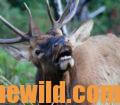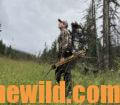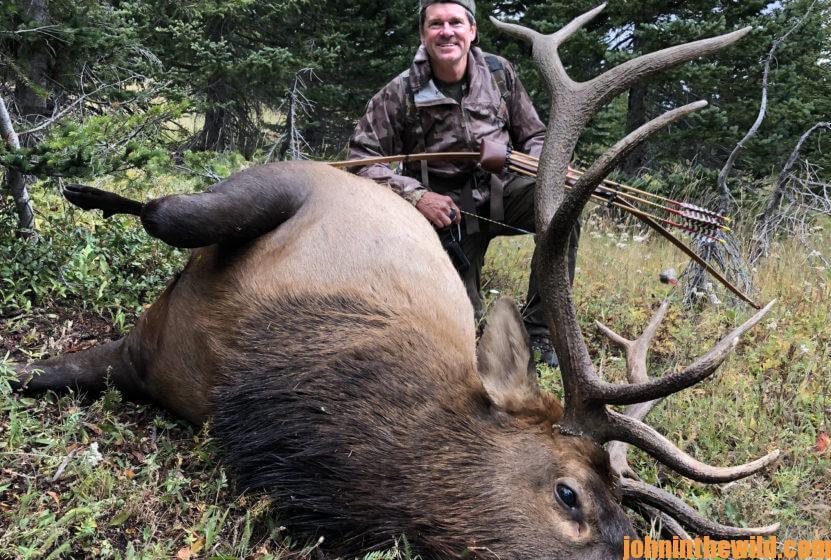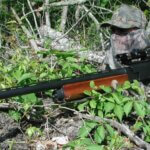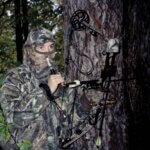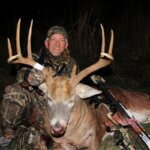Editor’s Note: Dudley McGarity is the general manager of BPI Outdoors, which owns CVA Muzzleloaders, Bergara Rifles and several other outdoor brands. McGarity has taken several elk with a muzzleloader as well as a custom rifle. But like many of us, McGarity always has had a dream of hunting a different way. He’s hunted in many states as well as in Africa, but his dream has been to one day hunt a bull elk on public lands with his longbow.
“I’ve never seen the hands on a watch move so slowly,” Dudley McGarity recalls. “I don’t believe I’ve ever looked at my watch that many times in my entire hunting career. To be honest, we may have fudged some and gone after the bull a few minutes before the 30 minutes we had planned.
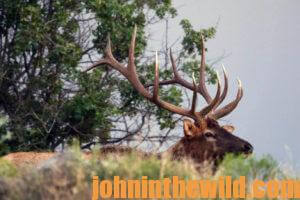 “Luckily, the area where we were hunting had rain that night, so the bull’s tracks were easy to see. After walking about 20 yards, we found a portion of my arrow. It was soaked in blood all the way back to the cresting on the shaft. The point and about 2 inches of the shaft were broken off and apparently were still inside the bull. We knew that for the arrow to break where it did, the broadhead should be stuck in the opposite shoulder from the side where it had entered the elk. We were very confident that we would locate the bull.
“Luckily, the area where we were hunting had rain that night, so the bull’s tracks were easy to see. After walking about 20 yards, we found a portion of my arrow. It was soaked in blood all the way back to the cresting on the shaft. The point and about 2 inches of the shaft were broken off and apparently were still inside the bull. We knew that for the arrow to break where it did, the broadhead should be stuck in the opposite shoulder from the side where it had entered the elk. We were very confident that we would locate the bull.
“When we reached the top of the hill, we found a few spots of blood. As we followed the blood, the blood trail became easier and easier to follow. We assumed that we wouldn’t have an exit wound, so there wouldn’t be as much blood as we would’ve expected to find if the arrow had made a clean pass-through. We followed the blood trail for about 80 to 100 yards, and Matt was in front of me working the trail with pieces of toilet paper. All of a sudden Matt stood straight up, turned to me, put his hands straight out to me and said ‘Congratulations!’ I couldn’t see anything after I shook Matt’s hand. However, then he said, ‘Step up here to where I am and look to your left.’ When I reached the spot where Matt had directed me to go, I could see the bull’s light-colored rump on the ground and his huge antlers.
“That was one of the most-exciting parts of any hunt ever. Although I had not officially scored the bull, he was about the same size of another bull I had taken a few years back, and that bull had scored 320. Matt and I thought that the bull was probably on the downhill side of his life because he was one of the biggest- bodied bulls I’d ever seen. Although you couldn’t weigh a bull in the woods, I’d say he was well above average in size. I’d taken three elk with my longbow and one with a muzzleloader, and this bull was much bigger than any of the other previous bulls I had taken.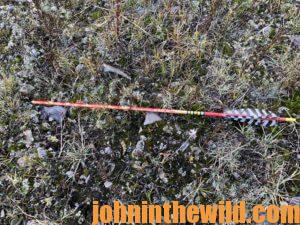
“This was where the fun of elk hunting ends and the work of elk hunting began – after the bull was down. However, I had some friends in nearby Belt, Montana – Chad Scherer and his family. So, I immediately texted Chad to bring his ‘Elk Extraction Uber.’ Chad put a horse in a trailer and his wife Marsha and his son Walker in the truck with him. They started heading to where we had the downed elk. Three hours were required for them to get to where our camp was, and then another 1-1/2 hours passed before we reached the elk. Ten minutes after we found the elk, we went ahead and field dressed the bull, removed the two hindquarters and boned the rest of the meat out. So, by the time Walker and the horse reached us, all we had to do was pack the meat and head out onto the back of the horse.
“After the meat was processed, we got 225 pounds of the boneless meat – an impressive amount. Usually a good-sized bull only would produce 185 to 190 pounds of processed meat. When we looked at the bull’s teeth, we saw how worn they were, and that also made us think that this bull was on the downhill side of his life expectancy.”
T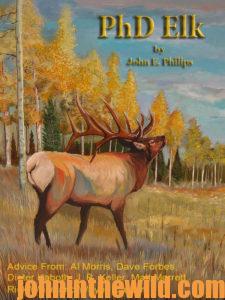 o learn more about elk hunting, check out John E. Phillips’ books, “PhD Elk: How to Hunt the Smartest Elk in Any State” and “Secrets for Hunting Elk,” both available at
o learn more about elk hunting, check out John E. Phillips’ books, “PhD Elk: How to Hunt the Smartest Elk in Any State” and “Secrets for Hunting Elk,” both available at
http://amzn.to/WkbAWa and http://amzn.to/WGb9le.
Tomorrow: Understanding the Challenge and the Mystery of Hunting Elk with a Longbow

